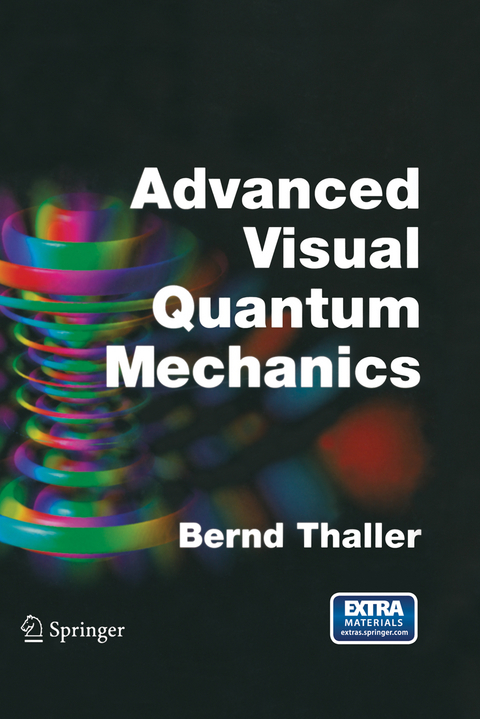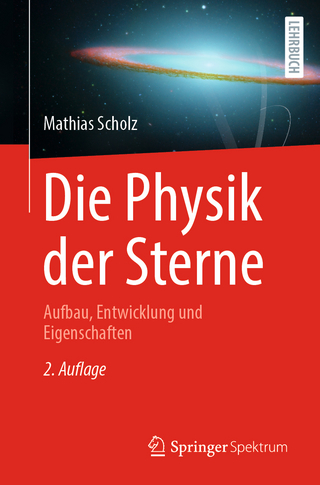
Advanced Visual Quantum Mechanics
Seiten
2004
|
2005
Springer-Verlag New York Inc.
978-0-387-20777-3 (ISBN)
Springer-Verlag New York Inc.
978-0-387-20777-3 (ISBN)
Advanced Visual Quantum Mechanics is a systematic effort to investigate and to teach quantum mechanics with the aid of computer-generated animations. It also contains a basic course on quantum information theory, introducing topics like quantum teleportation, the EPR paradox, and quantum computers.
Advanced Visual Quantum Mechanics is a systematic effort to investigate and to teach quantum mechanics with the aid of computer-generated animations. Although it is self-contained, this book is part of a two-volume set on Visual Quantum Mechanics. The first book appeared in 2000, and earned the European Academic Software Award in 2001 for oustanding innovation in its field. While topics in book one mainly concerned quantum mechanics in one- and two-dimensions, book two sets out to present three-dimensional systems, the hydrogen atom, particles with spin, and relativistic particles. It also contains a basic course on quantum information theory, introducing topics like quantum teleportation, the EPR paradox, and quantum computers. Together the two volumes constitute a complete course in quantum mechanics that places an emphasis on ideas and concepts, with a fair to moderate amount of mathematical rigor. The reader is expected to be familiar with calculus and elementary linear algebra. Any further mathematical concepts will be illustrated in the text.
This book has a home page (http://vqm.uni-graz.at) that includes more supplementary material, additional animations and visualizations, Mathematica® notebooks, and further information."
Advanced Visual Quantum Mechanics is a systematic effort to investigate and to teach quantum mechanics with the aid of computer-generated animations. Although it is self-contained, this book is part of a two-volume set on Visual Quantum Mechanics. The first book appeared in 2000, and earned the European Academic Software Award in 2001 for oustanding innovation in its field. While topics in book one mainly concerned quantum mechanics in one- and two-dimensions, book two sets out to present three-dimensional systems, the hydrogen atom, particles with spin, and relativistic particles. It also contains a basic course on quantum information theory, introducing topics like quantum teleportation, the EPR paradox, and quantum computers. Together the two volumes constitute a complete course in quantum mechanics that places an emphasis on ideas and concepts, with a fair to moderate amount of mathematical rigor. The reader is expected to be familiar with calculus and elementary linear algebra. Any further mathematical concepts will be illustrated in the text.
This book has a home page (http://vqm.uni-graz.at) that includes more supplementary material, additional animations and visualizations, Mathematica® notebooks, and further information."
Spherical Symmetry.- Coulomb Problem.- Particles with Spin.- Qubits.- Composite Systems.- Quantum Information Theory.- Relativistic Systems in One Dimension.- The Dirac Equation.
| Zusatzinfo | 103 Illustrations, black and white; XIV, 518 p. 103 illus. |
|---|---|
| Verlagsort | New York, NY |
| Sprache | englisch |
| Maße | 178 x 254 mm |
| Themenwelt | Naturwissenschaften ► Physik / Astronomie ► Astronomie / Astrophysik |
| Naturwissenschaften ► Physik / Astronomie ► Quantenphysik | |
| Naturwissenschaften ► Physik / Astronomie ► Theoretische Physik | |
| ISBN-10 | 0-387-20777-5 / 0387207775 |
| ISBN-13 | 978-0-387-20777-3 / 9780387207773 |
| Zustand | Neuware |
| Informationen gemäß Produktsicherheitsverordnung (GPSR) | |
| Haben Sie eine Frage zum Produkt? |
Mehr entdecken
aus dem Bereich
aus dem Bereich
die Geschichte und Erforschung unserer Galaxie
Buch | Hardcover (2023)
C.Bertelsmann (Verlag)
30,00 €
Aufbau, Entwicklung und Eigenschaften
Buch | Softcover (2024)
Springer Spektrum (Verlag)
64,99 €


